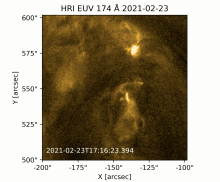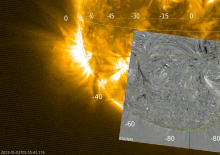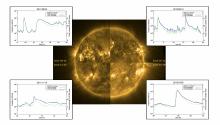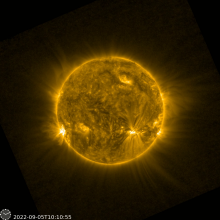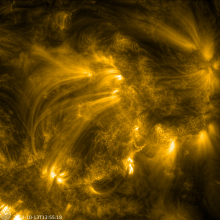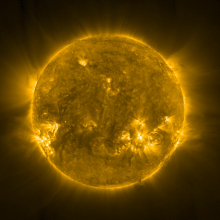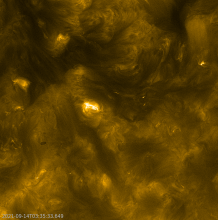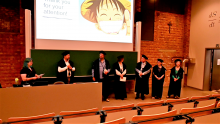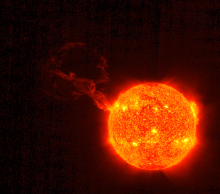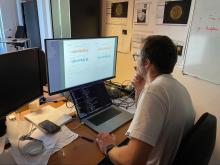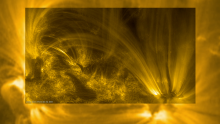In the early hours of April 20 a solar eclipse took place. Regions on Earth that saw, at least, a partial eclipse include parts of South/East Asia, Australia, and Antarctica. This meant that only a very small fraction of the world's population was able to witness this event. Even if it was a difficult eclipse to observe from the ground, PROBA2 had a front-row seat!
SIDC News
High-frequency sideways waves were detected for the first time using Europe's new solar observatory Solar Orbiter. These sideways waves are much more energetic than previously observed waves, and could play a role in heating the solar corona.
The telescope EUI onboard the satellite Solar Orbiter could capture Mercury while it transited the Sun. Scientists use the little black as a guide for science-approved photo-editing.
The PROBA2 PI-team welcomes research proposals for the tenth round of its Guest Investigator program for research based on SWAP and LYRA data analysis by scientists outside the SWAP and LYRA PI-teams.
Solar Orbiter has spotted a ‘tube’ of cooler atmospheric gases snaking its way through the Sun’s magnetic field. The observation provides an intriguing new addition to the zoo of features revealed by the ESA-led Solar Orbiter mission, especially since the snake was a precursor to a much larger eruption.
The ESA-led Solar Orbiter mission has experienced its second close encounter with the Sun. It is delivering more stunning data, and at higher resolution than ever before!
Solar Orbiter speeds towards its next rendezvous with the Sun on the evening of October 12.
The Royal Observatory of Belgium hires a full-time scientific collaborator, who will play a central role in ROB’s research on campfires.
On 20 June, 2022 Dana-Camelia Talpeanu successfully defended her PhD thesis ‘Numerical and Observational Study of Stealth and Consecutive Coronal Mass Ejections’. Her work was a joint project between the SIDC and the KU Leuven.
The EUI PI team welcomes research proposals for the first round of its Guest Investigator Program for research based on EUI and Solar Orbiter data analysis by scientists outside the EUI PI team.
A committee consisting of experts in software development, space mission operations, and science was appointed by ESA to follow the SOC development and to review it at regular intervals. The Flight Acceptance Review was the last in the series of reviews. It had to certify that the SOC is built following the pre-defined scientific and technical requirements. The committee has thoroughly inspected the SOC software and associated documentation. In April 2022, it concluded that the SOC satisfies all the requirements and the Flight Acceptance Review of the ASPIICS SOC is successfully closed.
On March 26, 2022, the Solar Orbiter satellite came closer to the Sun than ever before. A particularly exciting moment. The images of this closest approach -the perihelion-, taken by the Extreme Ultraviolet Imager (EUI) on board are will revolutionize solar physics!

